HAVANA—Over the past month, Cuba’s capital city has been host to an international slate of artists and an audience of art collectors, curators and tourists from around the world—including the United States—for the 11th Havana Biennial.
Americans in Havana
The Obama Administration has loosened travel restrictions to Cuba in recent years, allowing Cuban Americans to visit whenever they want and opening up opportunities to other Americans to travel to Cuba for “people-to-people” exchanges. As a result, specialty tour operators, museums and universities offer authorized trips with itineraries that focus on education, healthcare, music and art and emphasize interactions with ordinary Cubans.
The opportunities allowed many Americans to travel legally directly from the United States to Cuba for the Havana Biennial. The citywide event organized by the Wifredo Lam Center of Contemporary Art included more than 100 artists and collaborations from more than two dozen countries (view a comprehensive list here) whose works responded to the event’s theme: “Art Practices and Social Imageries.”
According to the organizing committee, the theme examines the relationship between visual productions and social imagery, specifically “the way people imagine their social space and express themselves through cultural and historical references, and the symbolic dimension they acquire through art.”

“Bicicletas ‘Forever’ (‘Forever’ Bicycles),” 2003 (74 bicycles) by Chinese artist Ai Weiwei, which is part of the Fontanals-Cisneros Collection on exhibit at the Universal Art Building of the National Museum of Fine Art near Old Havana where the Fontanals-Cisneros Collection, an extensive exhibit of works by artists from around the world, was on view.
A City Full of Art
From an 18th century fortress to the city’s museums and universities, venues large and small, indoors and out featured contemporary art. Down San Rafael, a street in Central Havana, a gallery space was screening short films by black women artists including Carrie Mae Weems, Lorna Simpson and Kara Walker, all of the United States.
It was a pleasure to see a one of French artist JR’s large scale images on the side of a building not too far from central Havana, but disappointing that it was the only portrait of the 25 in his Wrinkles of the City series observed.
Many works achieved impact using quantity, including Chinese artist Ai Weiwei’s “‘Forever’ Bicycles,” which is composed of 74 bikes and an installation of thousands of spoons by at Michael Pinas of Suriname at the Cuba Pavilion.
Dispatches from Havana
While exploring Cuba’s arts and culture was an amazing experience, trying to learn more about the nation’s complicated social, political and economic circumstances in just one week raised more questions than it answered.
The following is a survey of many of the biennial venues and a few of the installations. In the coming days additional posts will highlight individual exhibits and other arts observed around the city.
View more coverage of the 11th Havana Biennial.
All photos by Arts Observer

Above, A series of pinwheels on display in a plaza near the Malecon called “Playtime,” 2011 by Marianela Orozco. Top of page, Universal Art Building of the National Museum of Fine Art near Old Havana.
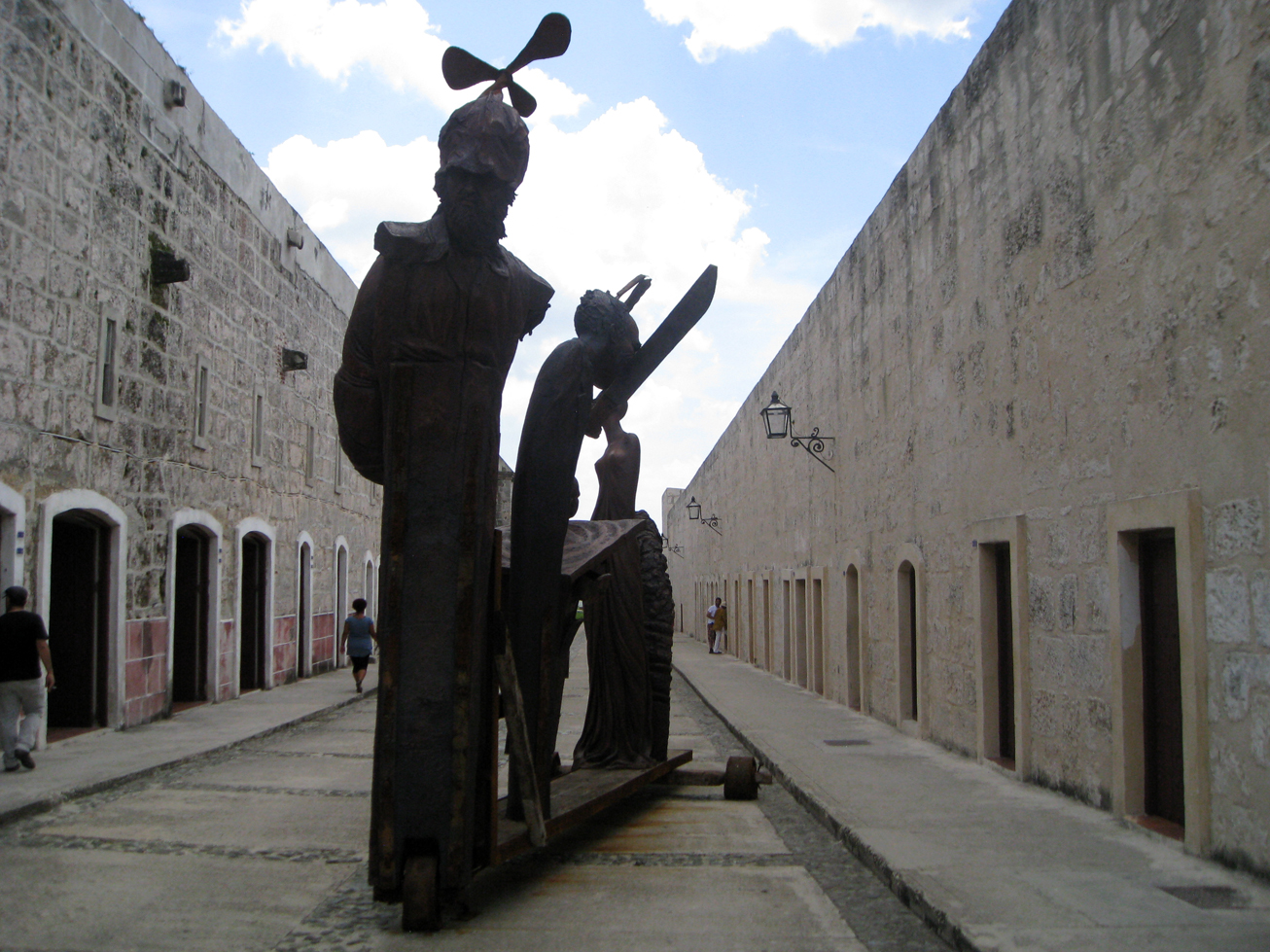
A sculpture called “La Comparsa” stands between two exhibition spaces, a series of buildings at La Cabana, an 18th century fortress that served as one of the main biennial venues and featured exhibits by dozens of artists.
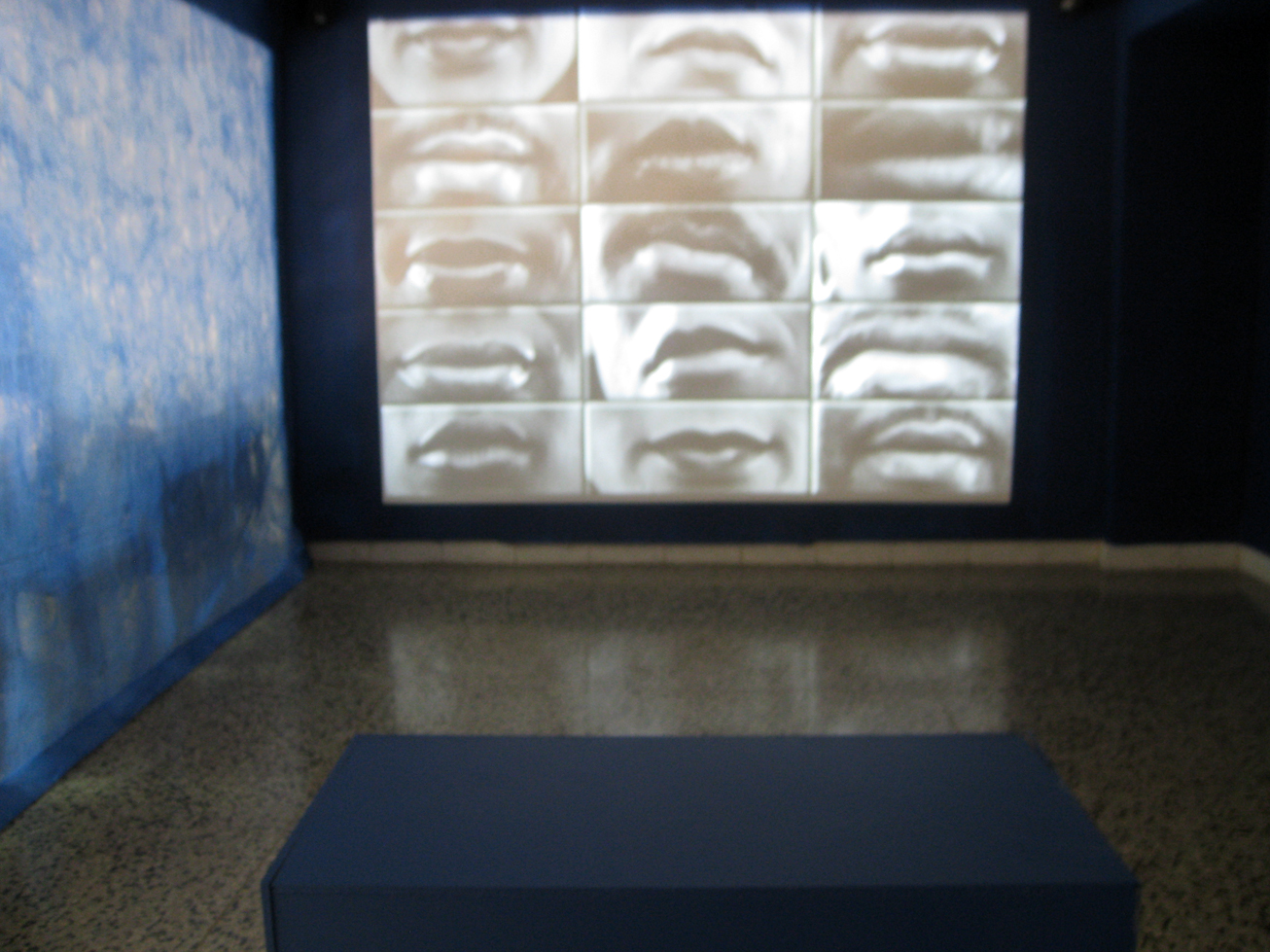
“Cinema Remixed & Reloaded 2.0” at Galeria Collage Habana on San Rafael featured videos by black women artists since 1970 and included Carrie Mae Weems, Tracey Rose, Lorna Simpson (her 2001 “Easy to Remember,” is shown above), Pamela Phatsimo Sunstrum, Kara Walker, and a collaboration by Bradley McCallum and Jacqueline Terry.

One of the installations at el Gran Teatro de Habana, a grand old neglected marble structure where bird dropping could be found in a couple of key areas near the art, a sheer white piece of fabric was draped from the rotunda ceiling of the three-story plus building to the ground floor.
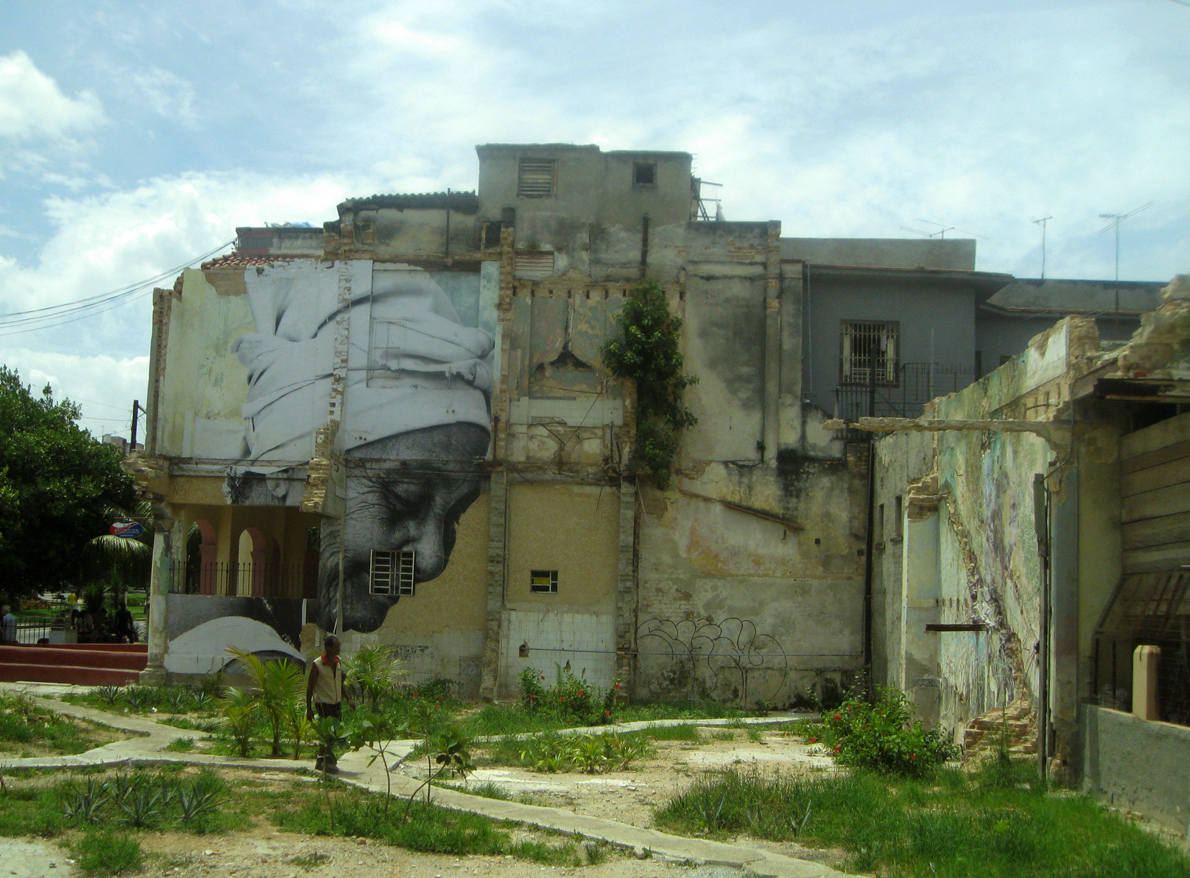
A portrait from French artist JR’s Wrinkles of the City mural series of 25 senior citizens who lived through the Cuban revolution, a collaboration with Cuban photographer José Parlá.

Instituto Superior de Arte (ISA), Havana’s fine art university, hosted several biennial installations and a tour of several of the schools visual arts studios demonstrated the talent of the students.

The architecture of the visual arts school of the Instituto Superior de Arte (ISA) was intriguing. The brick structure has many winding, covered passageways, circular pavilions and plazas and domed spaces. The design approach referenced African techniques and resembled parts of a woman’s anatomy from her breasts to fallopian tubes—one of the plazas even had a sculpture that looked exactly like a vagina.
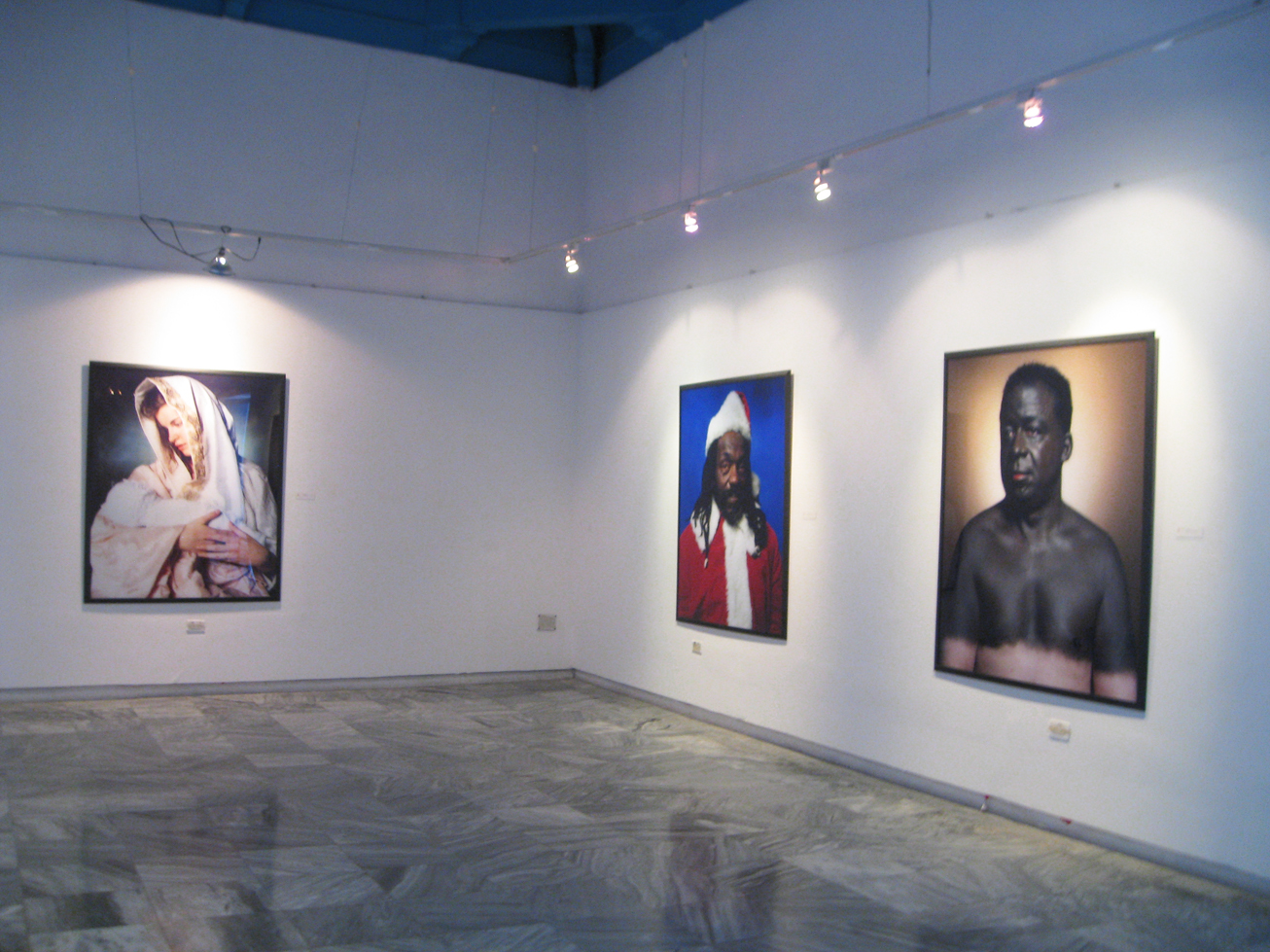
Fototeca de Cuba in Old Havana, which was established in 1986 for the preservation, study and promotion of Cuba’s photographic assets, hosted works by Cuban-American photographer Andres Serrano, many of which were extremely sexually explicit to put it lightly. Here a few comparatively PG selections: From left, “Holy Works (Mother and Child),” “The Interpretation of Dreams (Black Santa)” and “The Interpretation of Dreams (White Nigger).”

Museo de Bellas Artes, Cuban Collection features a special exhibit by Cuban contemporary artist Sandra Ramos that explores issues of migration. (No photos were allowed.) The government museum’s collection, including many of the works on display, includes art confiscated from the homes of wealthy families who fled during the Cuban revolution and left their valuables in homes believing they would soon return.
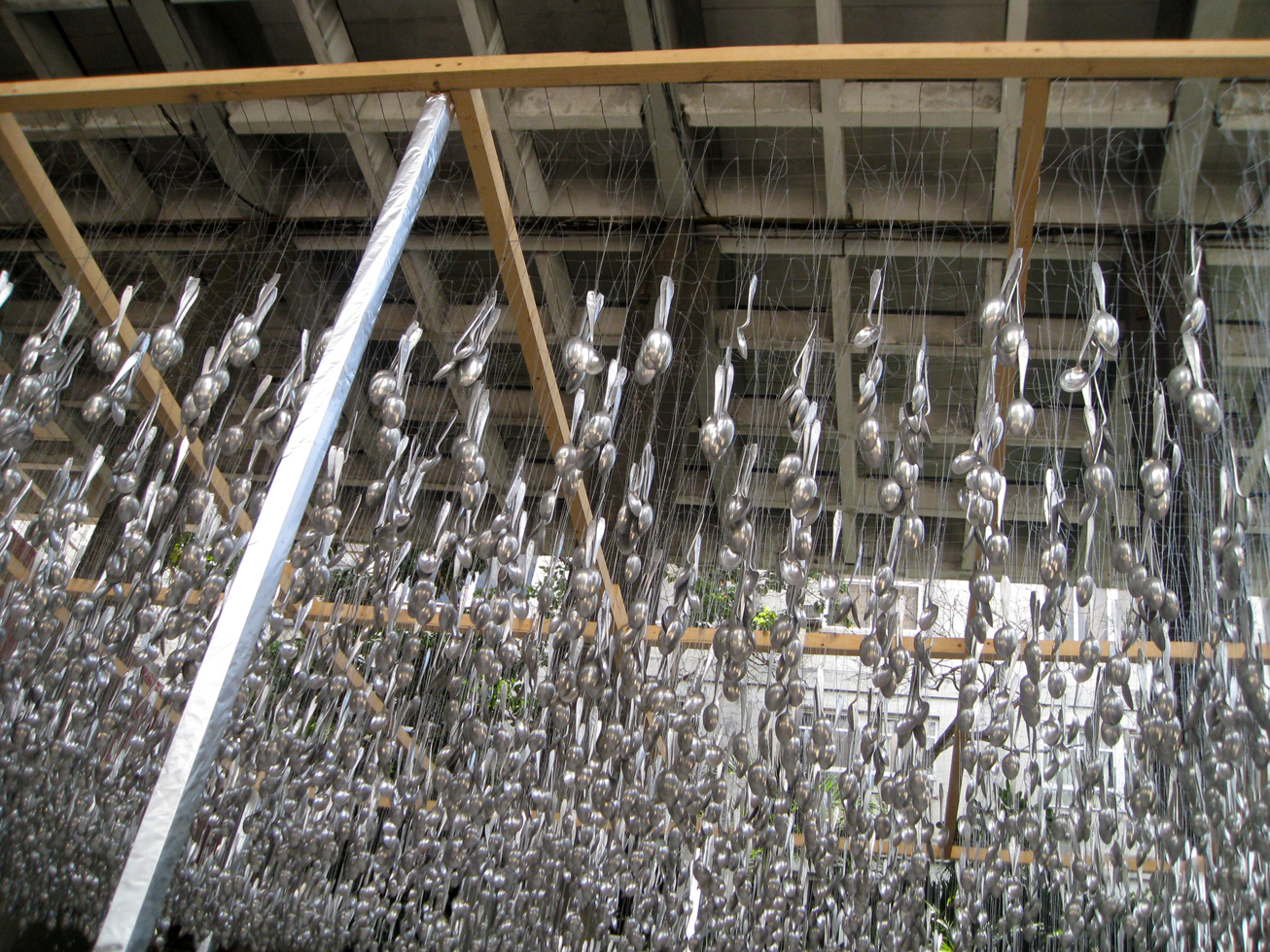
“Sanfika,” 2009-12 (stainless steel spoons) by Michael Pinas (Surinam) at the Cuba Pavilion, an outdoor, covered exhibit space in Havana. Suspended with thin twine, the thousands of spoons gently move and clang with the breeze creating a wind chime effect.
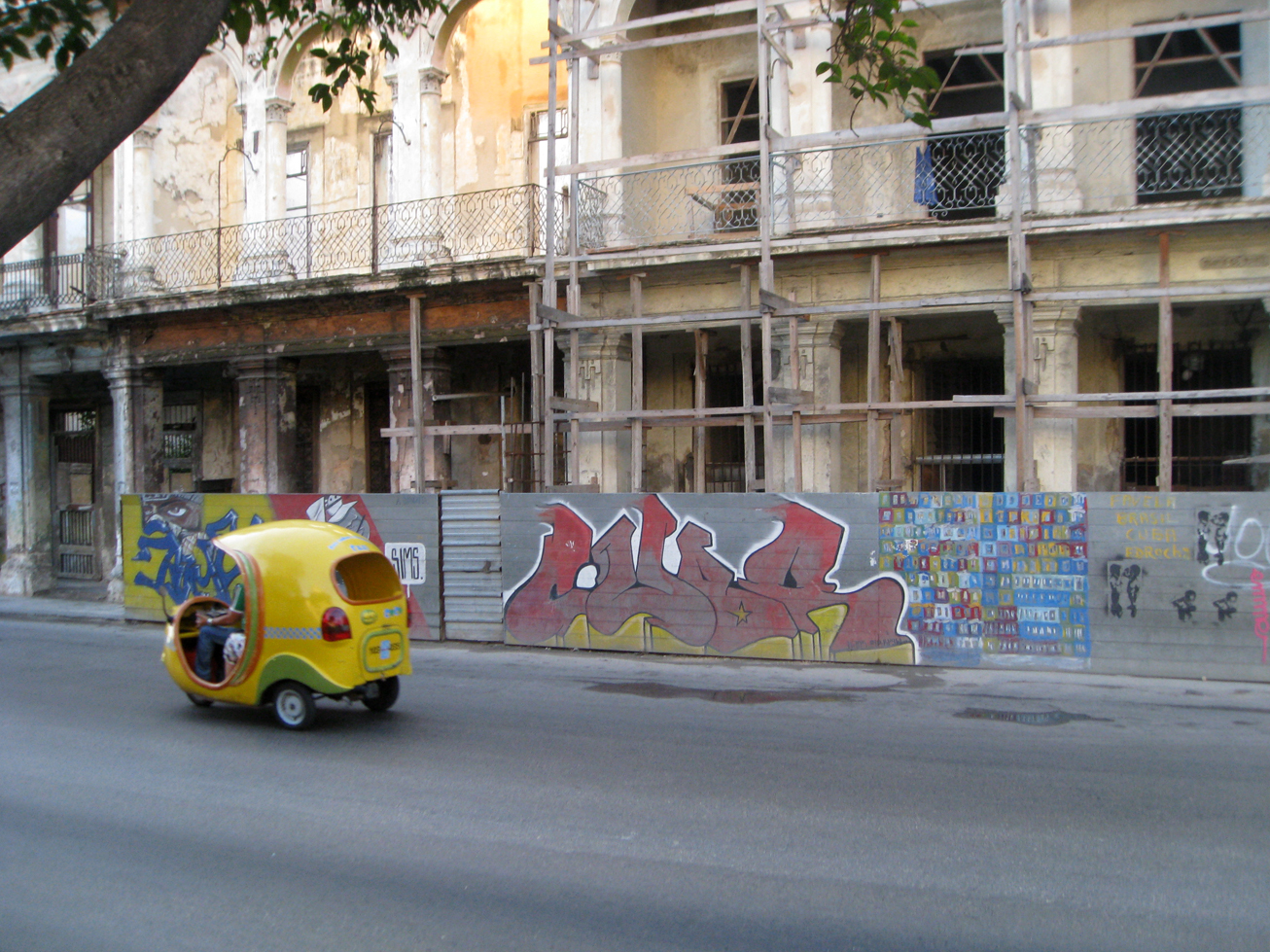
One of many street murals on wood panels erected in front of crumbling buildings in Central Havana near the Malecon, the main highway along the seawall. A mini-taxi, carts that transport tourists around the city, barrels by down a street called the Prado, in the direction of the Malecon.

“Se soltaron los leones,” 2012 by Roberto Fabelo (Cuba), features a red lion that looks as if it is emerging from the sea along the Malecon. It has escaped from its red metal cage with the door open which is part of the installation and is on exhibit about the length of a football field away, on the promenade in the middle of the Prado, a street the meets the Malecon. Throughout the biennial a series of public installations was installed along the seawall that lines the Malecon and the works were among the most the most innovative works featured at the event.
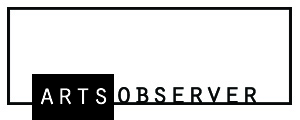
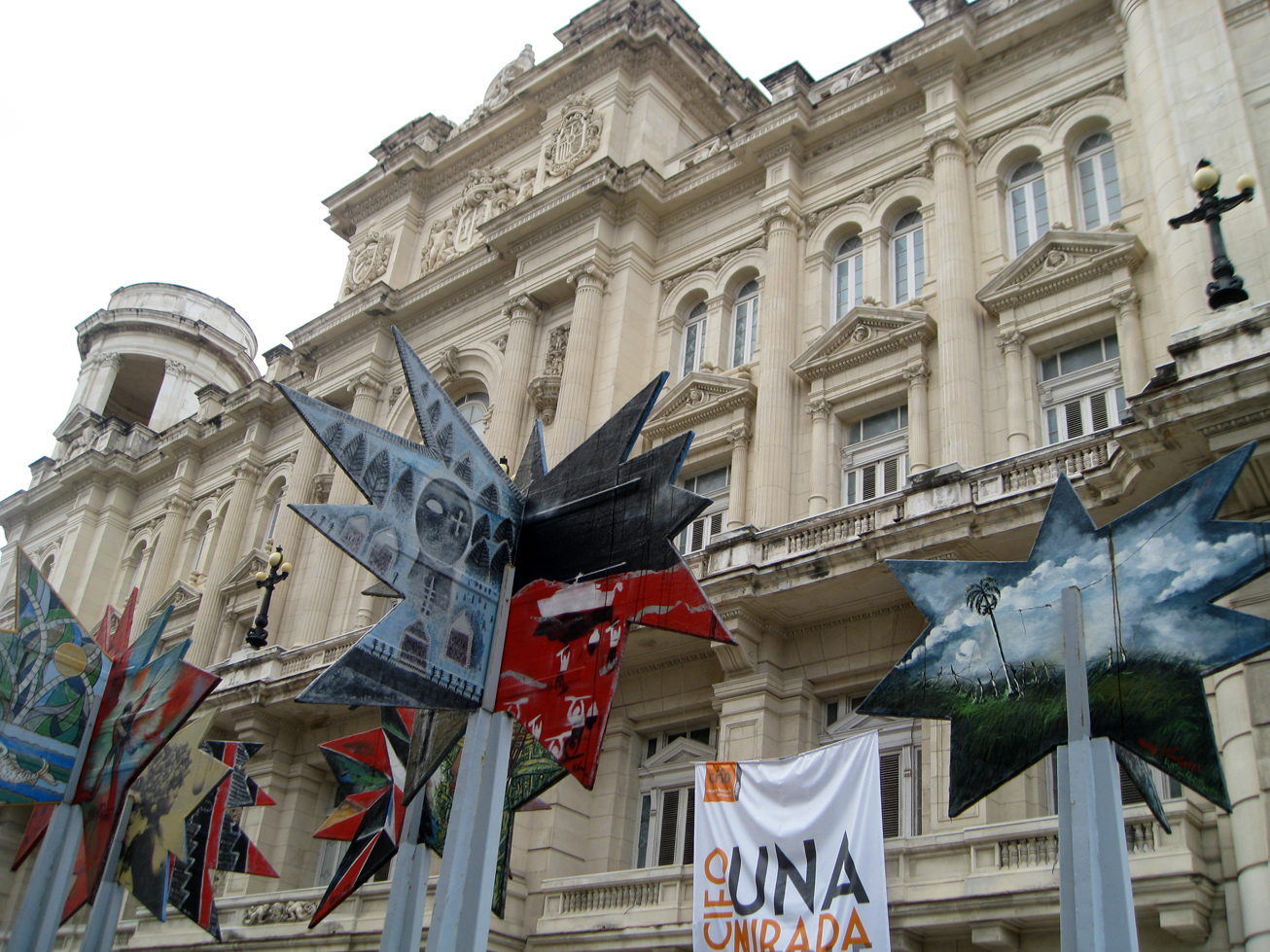
March 20…As an American painter I am seeking more information on showing my paintings / abstract /MILLENNIUM ALCHEMY at the HAVANA BIENNIAL. Please email me any available information regarding me exhibiting at this event. Here is also mt mailing address:Adios , JERRY CAJKO / INTERNATIONAL ARTIST
P.O. BOX 42
SUTTON , WEST VIRGINIA ,
29901 U.S.A.
I believe the next event is in 2014, I am not sure whether public information about its planning is available yet.. I suggest reaching out to organizers of the 2012 Havana Biennial at http://www.bienalhabana.cult.cu/ or the global umbrella biennial foundation at http://www.biennialfoundation.org/